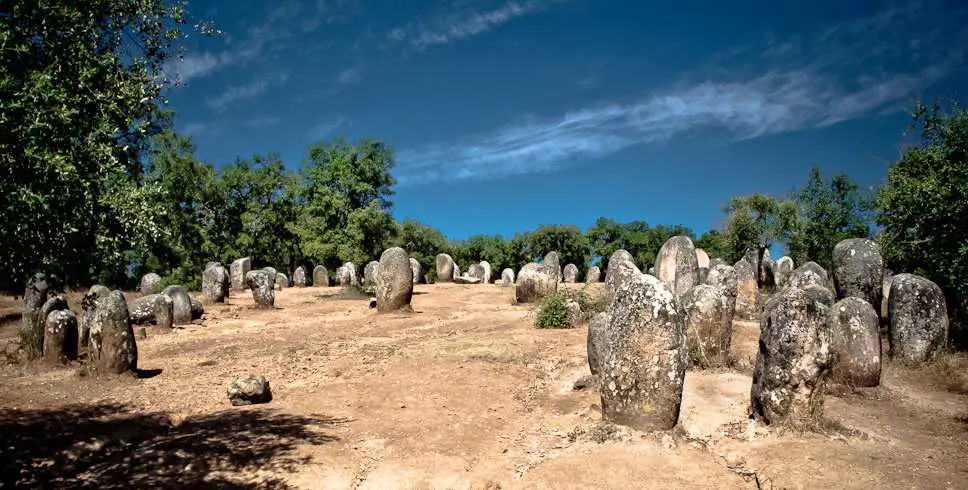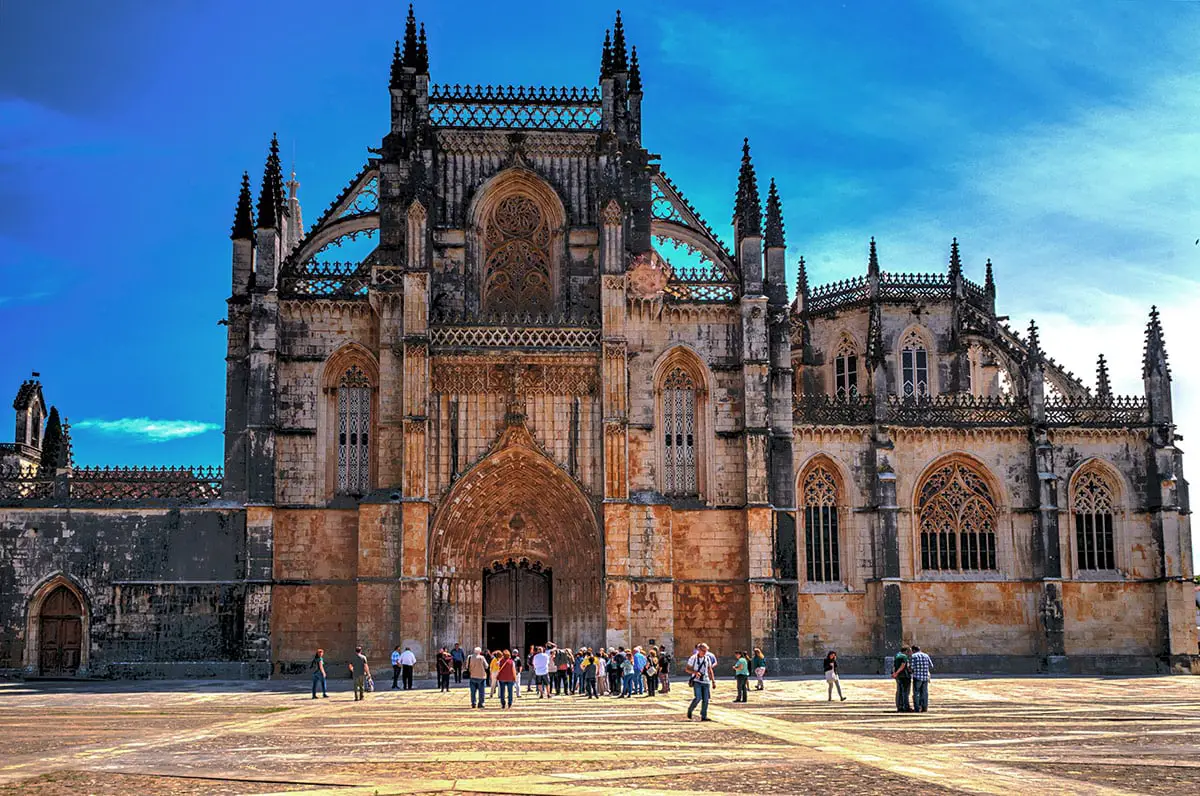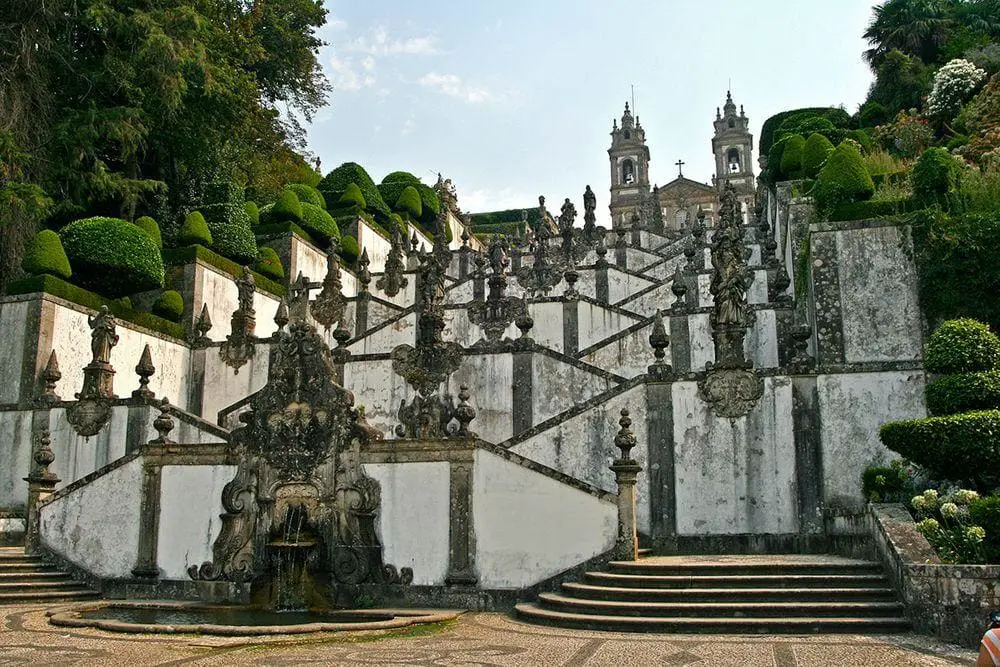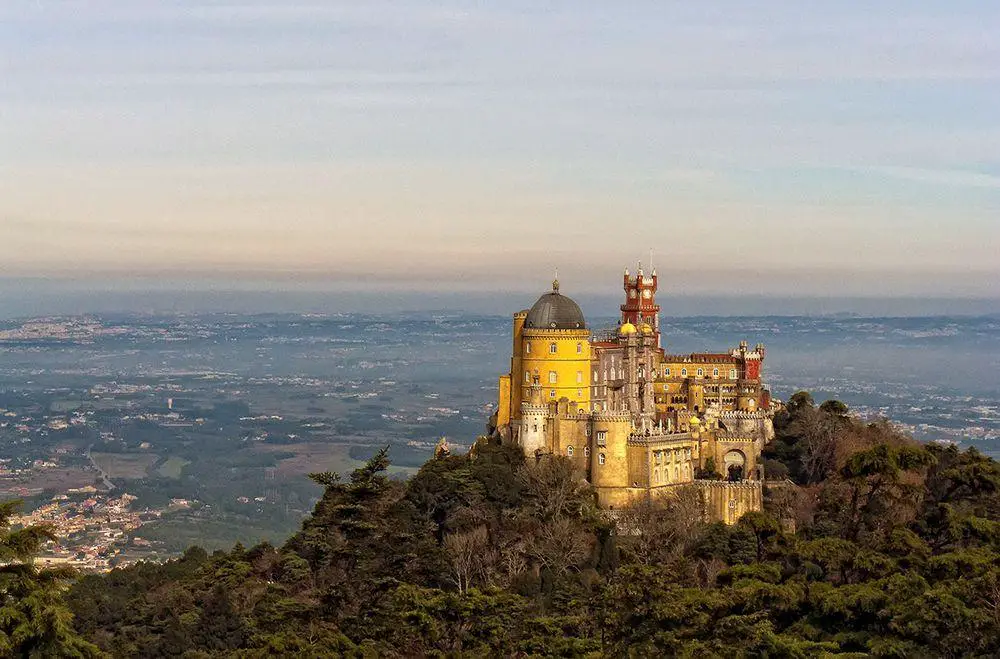Wondermondo 🢖 World 🢖 Wonders of Europe 🢖 Wonders of Portugal
Territory
Wonders of Portugal
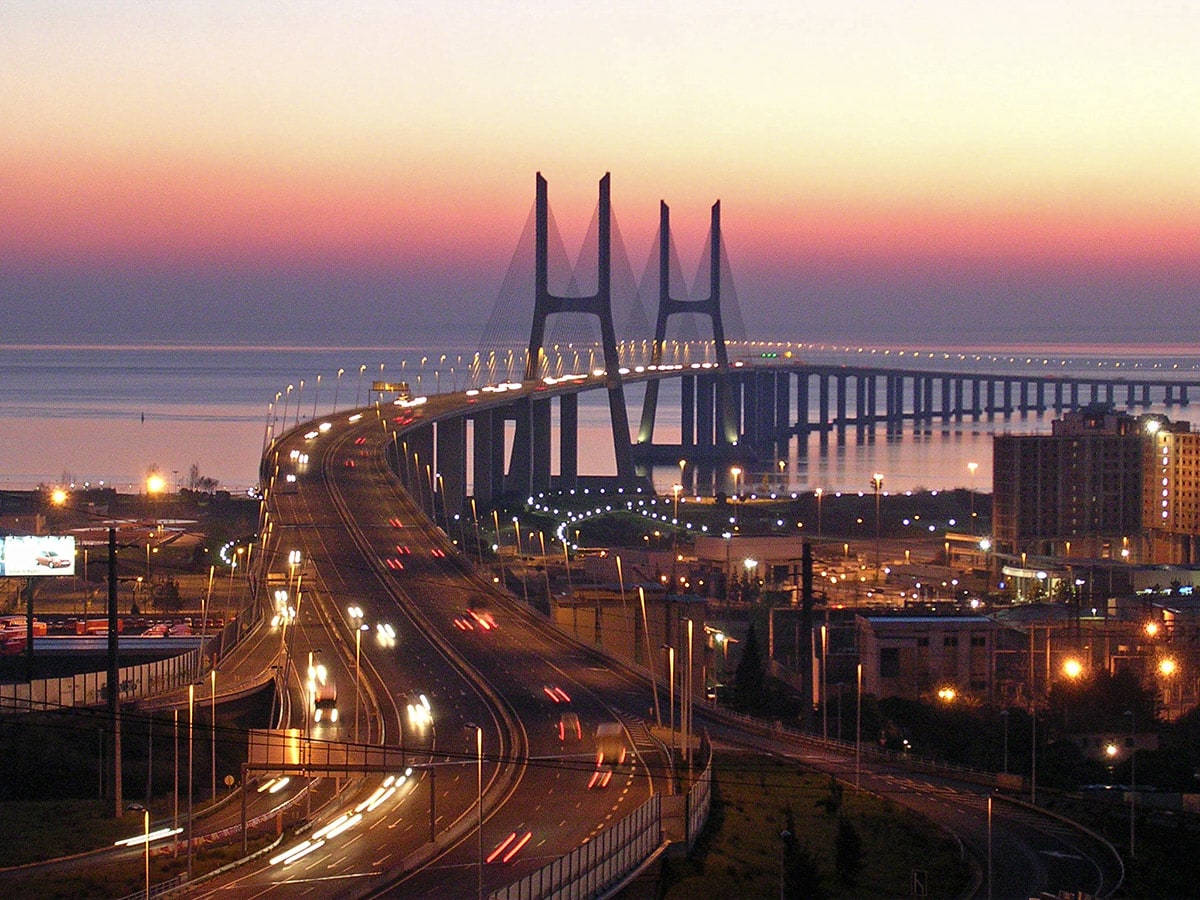
 Highlights
Highlights
The country at the far end of Europe has in many ways developed its own style. Portugal has especially rich cultural heritage, such as:
- Historical cities. Very interesting are the two metropolises of Portugal – Lisbon, and Porto. Each of these cities demonstrates innovations in urban planning as well as a wealth of local cultural traditions. Nonetheless, there are other very interesting historical cities – Sintra – the city of palaces, Évora, Guimarães, and others.
- Palaces. For long centuries Portugal was a rich colonial state and it shows in the ornate, rich architecture. Here are many fine palaces which demonstrate outstanding architecture, such as Pena National Palace – one of the most spectacular palaces in the world, Mafra National Palace or the mysterious Quinta da Regaleira.
Autonomous regions of Portugal
Map with the described wonders
If you see this after your page is loaded completely, leafletJS files are missing.
 Top 25 wonders of Portugal
Top 25 wonders of Portugal
Archaeological wonders
Conímbriga
Coimbra
Remnants of a large Roman settlement, enclosed with some 1,500 m long stone wall. Settlement evolved since the 9th century BC (Castro culture). Romans gradually took over the town in the 1st century AD and it was important regional center. Destroyed in 465 – 468 AD by Sueves.
Almendres Cromlech
Evora (Évora)
Largest megalithic site in the Iberian peninsula, consisting of impressive circular stone settings and separate menhirs. Stones are ornamented, and the stone setting was made in 5000 – 4000 BC.
Architecture wonders
Sintra
Lisbon
A historical town in beautiful hills. In Sintra are located numerous beautiful buildings – numerous palaces and estates. The most impressive ones are the Pena National Palace, the Castle of the Moors, and the Sintra National Palace.
Jerónimos Monastery
Lisbon
One of the most beautiful buildings in Portugal, a Hieronymite monastery from 1450, built in 1552 in Manueline style, richly decorated.
Castle of the Moors
Lisbon
Enormous medieval castle on the top of a hill, overlooking Sintra. It was built in the 8th – 9th centuries by Muslims. Captured by Christians in 1147. Very impressive are the long outer walls of the castle.
Mafra National Palace and Basilica
Lisbon
An enormous palace – monastery, built in Baroque style in 1717 – 1730. During its construction this was by far the most ambitious project in the country, involving up to 45 thousand workers. Palace and monastery have more than 1,200 rooms, the facade is 220 m long. The highlight of the palace complex is the gorgeous library in Rococo style.
Quinta da Regaleira and its gardens
Lisbon
Ornate palace in Romantic style. Notable is the garden with numerous unusual structures – grottoes, wells, fountains, and other structures. The garden architecture contains numerous references to mysterious symbols. There is an extensive system of tunnels as well as two Initiation wells that were used for mysterious rituals.
Batalha Monastery
Leiria
A beautiful structure of Dominican convent, built in Late Gothic style in 1386 – ˜1517. One of the greatest Gothic structures.
Bom Jesus do Monte
Braga
An impressive shrine, built in Baroque style in 1722 – 1725 and later. Most impressive is the 116 m high stairway to the summit. On the top has been built a church in Neo-Classical style (1784 – 1834).
Porto Cathedral
Porto
One of the most important Romanesque buildings in this region of Europe. Cathedral was built in 1110.
Pena National Palace
Lisbon
Hilltop castle, for the most part, was constructed in the 19th century in Romanticism style. One of the most beautiful and scenic castles in the world. Beautiful park around the castle with numerous exotic plants, including numerous tree ferns from Australia and New Zealand.
Porto historical center (Oporto)
Porto
Beautiful historical city on the right bank of the Douro River. The city evolved since Roman times and most likely gave its name to the country of Portugal. The unique cityscape is defined by steep slopes at the Douro, densely built historical structures, a nearby ocean, and impressive bridges.
Marvão
Portalegre
Historical town with fortifications on the top of a prominent granite hill. Beautiful views open from the town.
Queluz National Palace
Lisbon
One of the last great Rococo palaces in Europe, built in 1747 – 1792. Palace has an exquisite, sophisticated interior, some rooms have exuberant ornamentation.
Lisbon Baixa (Baixa Pombalina)
Lisbon
One of the first earthquake-resistant, planned cities with a rectangular grid of streets. This beautiful city area was built after the 1755 earthquake and includes many innovations in urban planning.
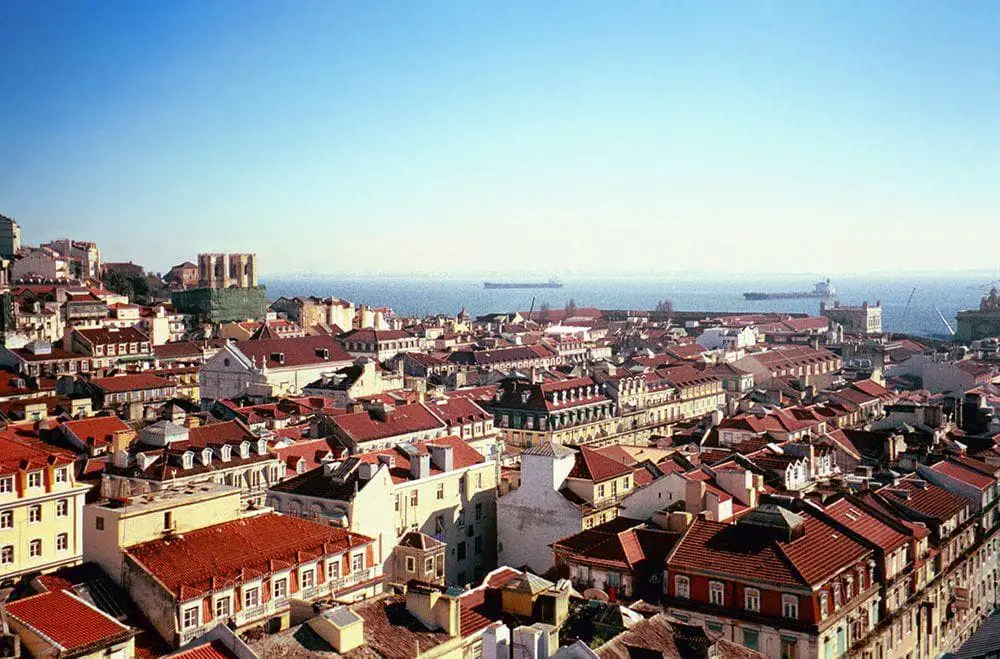
Convent of Christ in Tomar
Santarém
Medieval fortification – religious building, constructed by Knights Templar sometimes around 1160 AD. It served as their headquarters in Portugal. One of the best examples of the Manueline style in architecture. The convent consists of a massive castle, a round church, and eight cloisters, all surrounded by a fortification wall. Especially impressive and interesting is the round church – The convent church with its opulent interior. Knights Templar had profound importance in the Age of Discovery that to a large extent was started by Portugal.
Guimarães
Braga
Historical city – a place where the contemporary nation of Portugal was born in the 12th century. Numerous medieval buildings have been preserved.
Alcobaça Monastery
Leiria
This Cistercian monastery was established in 1153. It has enormous and beautiful buildings and is the earliest example of Gothic architecture in Portugal.
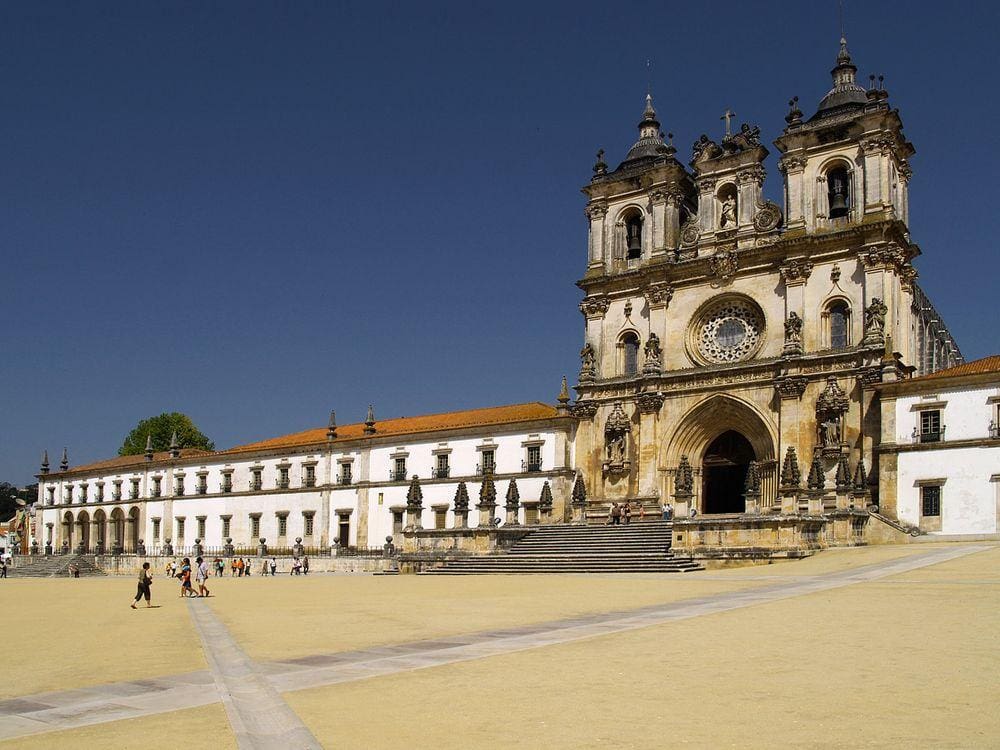
Guimarães Castle
Braga
An impressive castle, built in the 10th century as a protection against the attacks of Moors and Normans.
Dom Luís I Bridge
Porto
Impressive metal arch bridge with 172 m long central span that was the longest in the world at the time of construction, in 1881 – 1887. Bridge has upper and lower decks. The total length is 385.25 m.
Clérigos Church and Torre dos Clérigos
Porto
Ornate Baroque church with a separate bell tower that is 75.6 m high. The tower is one of the symbols of city.
Church of São Francisco in Porto
Porto
This Franciscan church has one of the most decorated interiors in Europe. The gothic church was built in 1383 – around 1425. In the first half of the 18th century, the interior was lavishly covered with gold embellishments in the Baroque style.
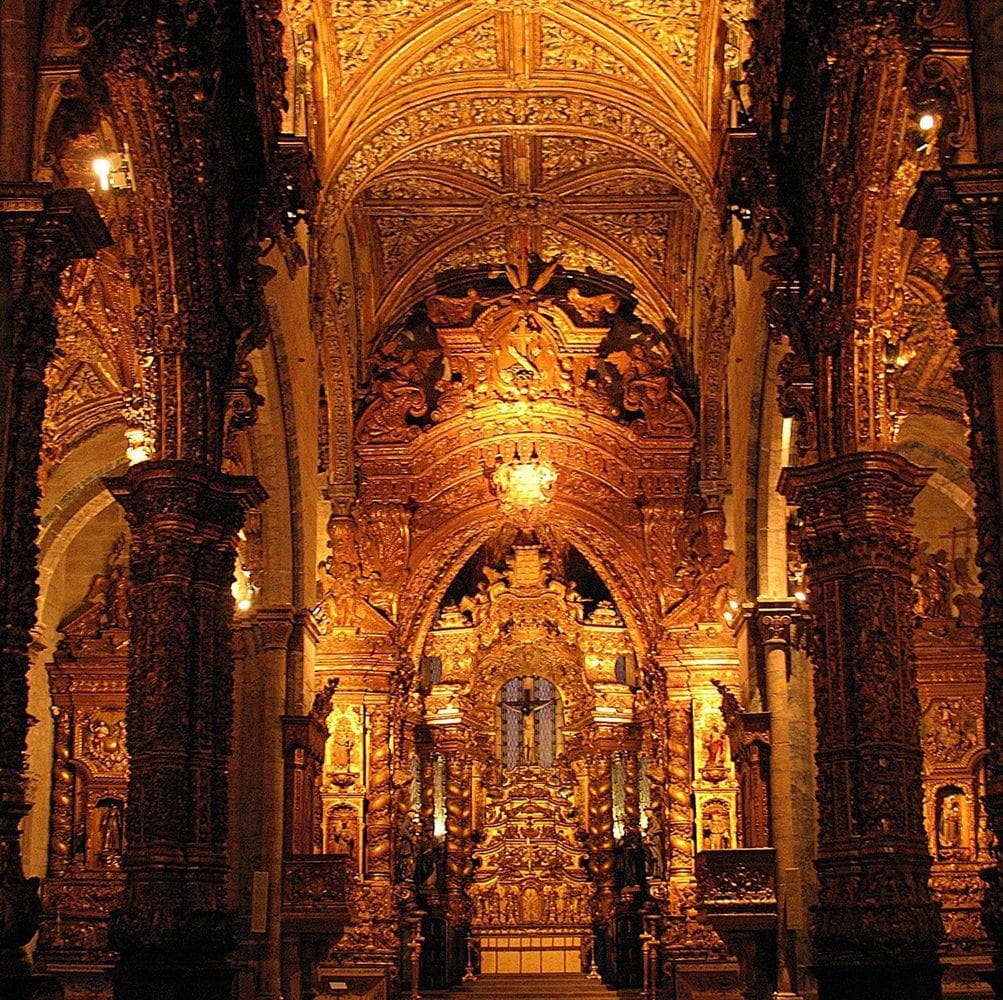
Monsaraz
Evora (Évora)
A fortified medieval town, built on the top of the hill. Settlement here has existed since the Neolithic. Current planning was shaped mostly in the 13th century. Most of the buildings in this town have historical value.
Palácio da Bolsa
Porto
Public building, built for representation purposes by Commercial Association. The exterior of the palace has an austere Neo-Classical style but the interior is exuberant. Built in 1842 – 1910.
Sanctuary of Our Lady of Remédios
Viseu
An impressive shrine with a zig-zagging stairway, influenced by Bom Jesus do Monte. Built in 1750.
 Recommended books
Recommended books
DK Eyewitness Travel Guide: Portugal
DK Eyewitness Travel Guide: Portugal is your in-depth guide to this beautiful country. Explore the magnificent Jerónimos Monastery, sample some wine in Porto, and discover the best beaches, scenic routes, markets, and festivals the country has to offer.
Rick Steves Portugal
Tour Lisbon’s cobbled lanes, cruise the Douro River, and soak up the sun on Algarve beaches: with Rick Steves on your side, Portugal can be yours!

